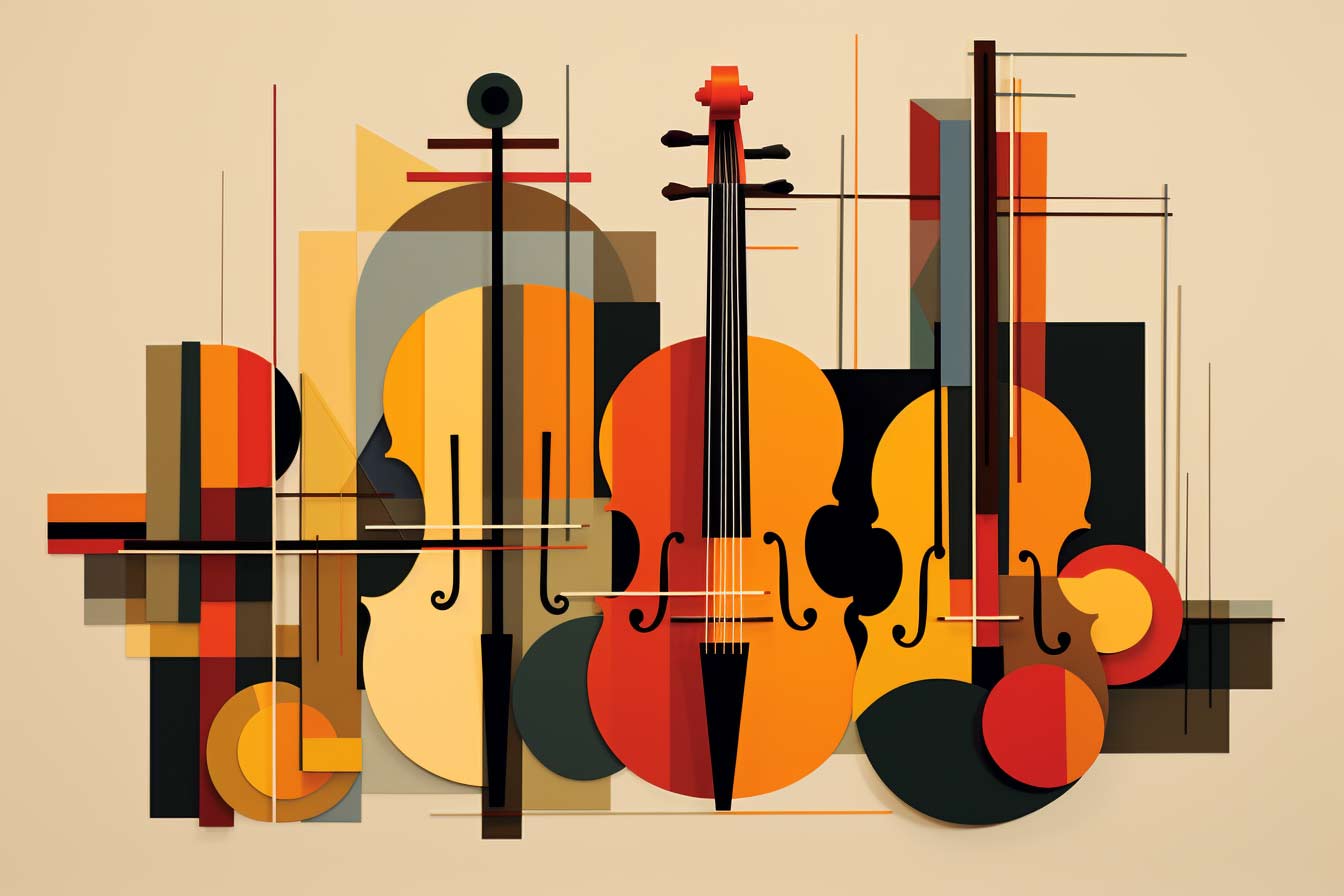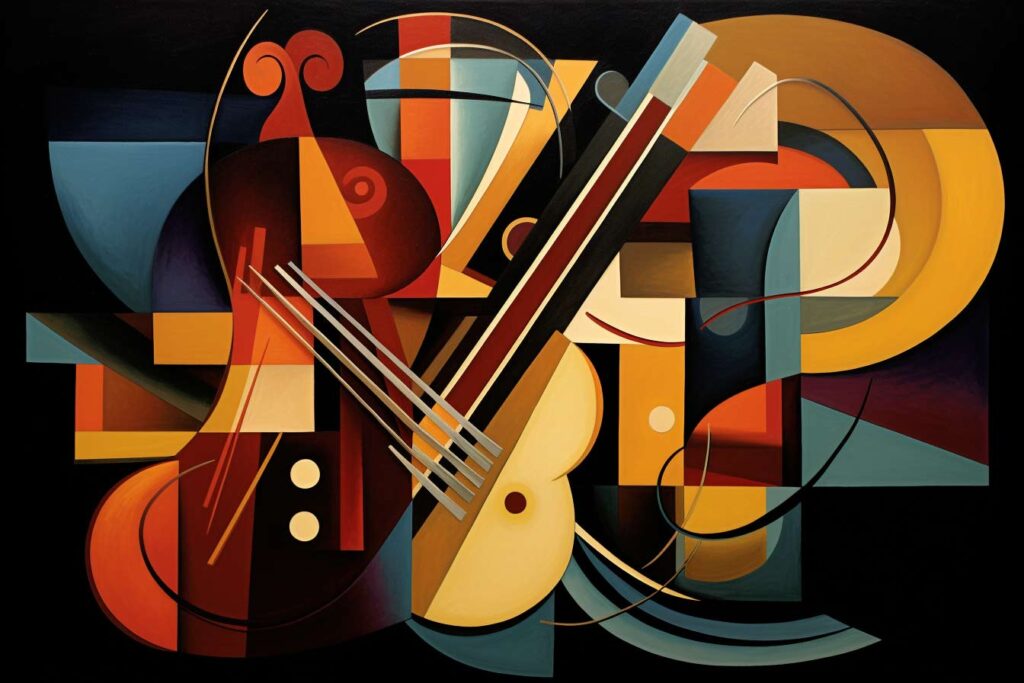The Purity of Line and Shape
In the vast realm of art, there exists an intriguing affinity between the essence of musical instruments and the geometrical simplicities of lines and shapes. Our perception is so thoroughly mired in the familiar, that often we find it difficult to break away and see things in their purest forms. The violin and guitar, revered for their sinuous curves and delicate craftsmanship, can be distilled into their essential forms, taking on a new visage, and offering a fresh perspective.
Violin: The Alchemy of Straight Lines
At its heart, the violin is a symphony of contours. Each curve and line intricately marries sound with form. But if one were to distill the instrument to its fundamental essence, it would be a bold interplay of lines and shapes. The strings, the core deliverers of its soulful melodies, can be represented as straight lines, direct in their purpose and unwavering in their trajectory.
In this reimagination, the body of the violin, rather than retaining its traditional curvaceous silhouette, metamorphoses into avant-garde shapes. Each form, though seemingly abstract, captures an emotion, a note, a story. This treatment gives life to a modern representation, where tradition meets innovation.
Guitar: Harmony in Geometric Abstraction
The guitar, with its voluptuous body and embracing curves, is more than a musical instrument. It is an emblem of harmony, of songs sung and stories told around campfires and concert halls. But, what if this familiar form were to be seen through a lens of geometric abstraction?
Its strings, like the violin’s, become a series of unwavering straight lines – epitomes of clarity and determination. Meanwhile, its body, once rounded and full, fragments into a collection of audacious shapes that provoke thought and emotion. In this new vision, each shape takes on a meaning, representing chords, rhythms, and the very soul of the instrument.
A Fresh Aesthetic: The Contemporary Echoes of Timeless Classics
This venture into the world of geometric abstraction and its application to classical musical instruments like the violin and guitar is not merely an exercise in artistic audacity. It is a reflection of the constant dance between the past and the future. By breaking down and reconstructing these revered instruments, we pay homage to their timeless beauty while inviting a contemporary dialogue.
Such is the transformative power of art. It invites us to view the world differently, to see beauty in both complexity and simplicity, and to appreciate the familiar while embracing the new. Abstract musical art, with its essential geometric forms, is a testament to this unending cycle of reinvention.

